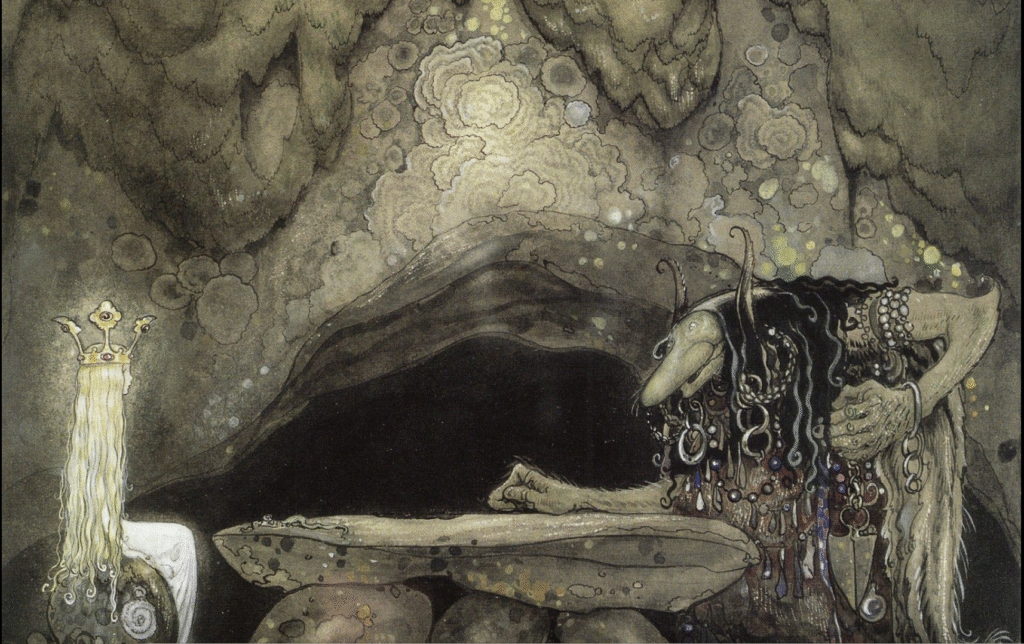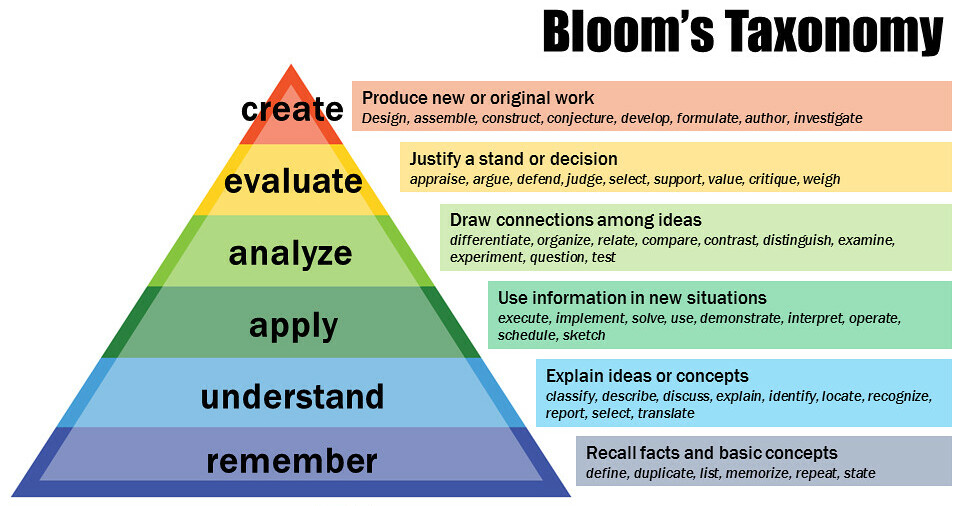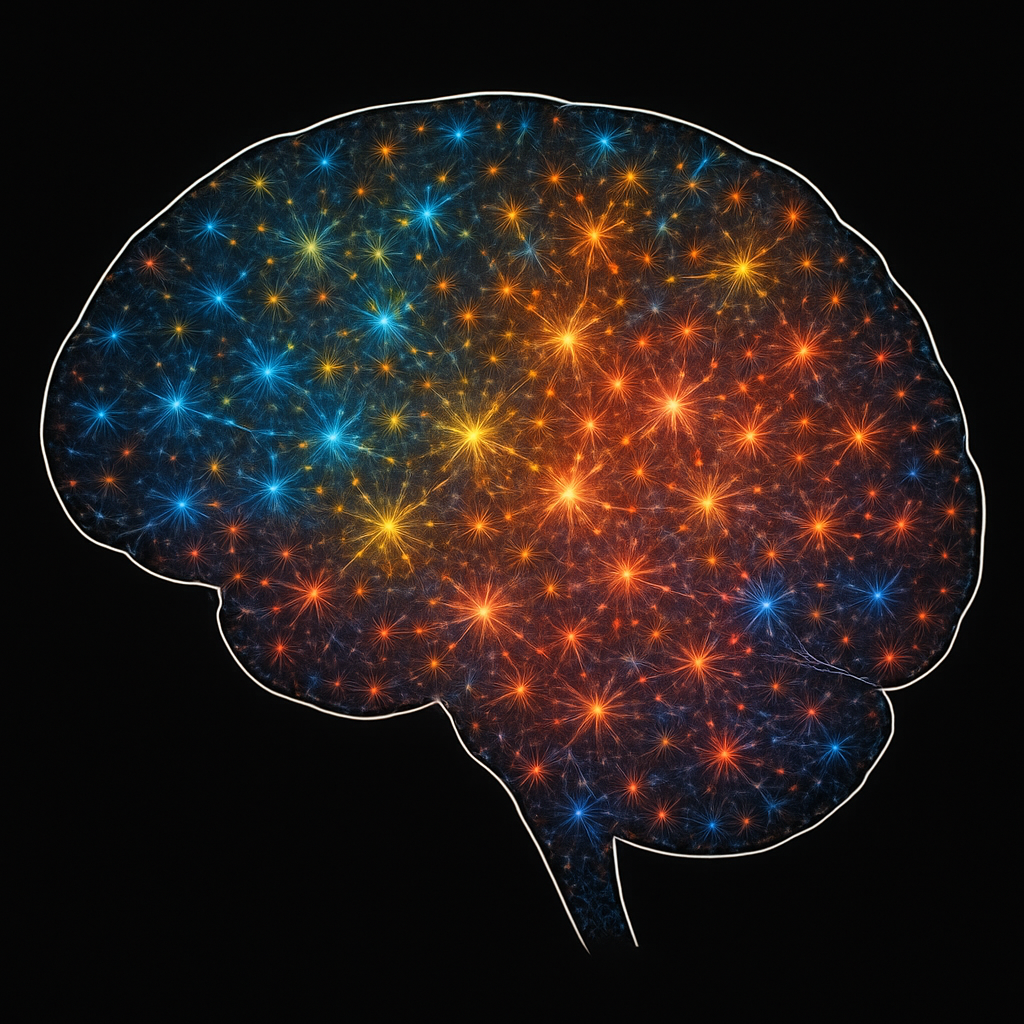Physical Address
304 North Cardinal St.
Dorchester Center, MA 02124
Physical Address
304 North Cardinal St.
Dorchester Center, MA 02124

Marcus checked his phone for the third time in as many minutes.
The bus was late again.
Around him, the morning crowd moved with practiced efficiency. Earbuds in, eyes down, everyone seemingly knowing exactly where they were going and why.
He felt the familiar tightness in his chest, that gnawing sense that everyone else had figured something out that he’d somehow missed.
At thirty-seven, he should feel more capable, more certain.
Instead, he felt like he was watching the world accelerate past him while he stood still, feet cemented to the same spot he’d occupied for years.
If Marcus’s experience sounds familiar, you’re not alone.
There’s a pervasive, unsettling feeling spreading through modern life.
The world is moving too fast. AI tools emerge overnight. Industries transform in months rather than decades.
The skills that once guaranteed stability now feel obsolete before you’ve even mastered them. And beneath it all sits that uncomfortable truth—you’re perpetually one step behind.
Over a lifetime, this can have a compound effect. Those in later stages of life can feel stranded in a world so unfamiliar, they’re unable to adapt or solve new problems.
This isn’t just anxiety. It’s a recognisable pattern I call the stagnation-overwhelm-feeling left behind trap.
And it operates as a vicious cycle:
Your routine feels manageable, your days predictable.
But beneath that calm surface, your mind, your physical brain, is actually fading.
Without challenge, neural pathways weaken. Mental agility atrophies like an unused muscle.
A real-world challenge disrupts your comfortable routine. A job change, a new technology you must learn, a problem that just requires skills you don’t have.
Your unprepared mind, softened by months or years of routine, freezes under the cognitive load.
Everything feels impossible all at once.
Overwhelm can lead to burnout, opting out, or something else that puts your life on hold.
It might feel like everyone else keeps moving forward, but we’re all susceptible more than ever to the effects of stress and overwhelm.
Your mental tools are insufficient for the current complexity of life and work.
The gap between what the world demands and what you can deliver has widened into a chasm.
The emotional cost of this trap is devastating.
You can’t stop comparing yourself to others. How do they do it?
Anxiety becomes your constant companion.
Self-efficacy crumbles.
You lose that essential sense of personal agency—the belief that your actions can meaningfully shape your circumstances.
You feel as if you’re not just falling behind; you’re watching yourself fall into a downward spiral. Whether it’s in your working life or the way you connect to others, there’s a feeling that you’re powerless to stop it.
Even if that’s not objectively true, it’s a belief that’s hard to shake.

Here’s the uncomfortable truth: mental comfort isn’t stability. It’s the precursor to stagnation, and the world won’t wait for you to catch up.
Psychologist Mihaly Csikszentmihalyi spent decades studying what he called “optimal experience”. He looked at that state of flow where you’re fully engaged and performing at your best.
His research revealed something amazing.
A sense of sustained well-being requires that challenge and skill must increase in tandem.
When the world’s complexity rises but your capabilities stay static, it means your mind is stuck. As life gets more complex, we need better problem solving skills. But if you’re stuck, you tip into chronic anxiety and overwhelm.
It’s not a character flaw. It’s a mathematical inevitability.
But here’s where it gets worse. The methods most of us rely on to “keep up” are fundamentally broken.
Reading articles, watching videos, even re-reading important texts multiple times. None of this works.
Repetition creates the illusion of learning.
Recent cognitive science research has confirmed what educators have long suspected.
Passive methods encode isolated facts with few connections, creating knowledge that decays rapidly and offers no practical utility when you need it most.
You gather data points, but lack the ability to synthesize them or solve novel problems with them.
Think about how many books you’ve read where you can barely remember anything about a week later?
How many videos have you watched that seemed to fly in and out of your head?
Here’s the thing, it’s not a failure of memory.
It’s the direct result of learning methods that were never designed to create lasting, usable knowledge.
The problem runs deeper still.
Cognitive Load Theory
Your working memory is the mental workspace where you process information.
It’s like writing in sand.
Everything disappears fast.
Without rigorous training that pushes basic skills into automaticity, every new task eats up all available mental bandwidth.
When complexity increases, guaranteed overwhelm follows, along with the emotional shutdown.
This is what makes Marcus check his phone repeatedly at the bus stop, chasing the small dopamine hit, rather than engaging with the world around him.
Or reading a book…
The way out of this trap isn’t to learn more.
It’s to learn how to learn. And that means doing it differently.
We need to shift focus from what we learn to how we learn.
The goal isn’t information accumulation; it’s structural, neurological change.
“We extend beyond our limits, not by revving our brains like a machine or bulking them up like a muscle, but by strewing our world with rich materials, and by weaving them into our thoughts.” – Annie Murphy
Real learning requires struggle. It should be hard. And that’s the point.
Easy learning isn’t a thing.
Adopt slow, challenging learning practices.
Engage with the materials, review, question, and interleave different topics. Space out your learning into smaller chunks instead of cramming.
Force yourself to retrieve information from memory rather than passively reviewing it.
Why does this work?
Because neuroplasticity—your brain’s ability to change—involves actual structural transformation.
When you struggle to recall information or apply a skill, you’re triggering synaptic growth and myelination, the processes that consolidate learning into durable memory.
This is called ‘consolidation’. And it takes time. That’s why spaced out learning (ten minutes to an hour a day) is better than throwing an all-nighter just before an exam.
Making an effort during this initial encoding leads to permanent changes in your brain, and in the way you think and approach the world. More on that later.
Easy learning feels good in the moment but it evaporates like dew in the morning sunshine.
Difficult learning can seem frustrating, but it pays you back in more ways than you might imagine.
Make it Hard And Slow
Replace your passive consumption with conscious, active engagement at every opportunity.
Instead of re-reading notes, close the book and quiz yourself.
Instead of watching another tutorial, teach the concept to someone else. Even if that someone is just you, talking through the idea out loud.
Most importantly, apply new skills to real-world scenarios immediately, even in small ways.
This effort isn’t optional. That’s the key. The process. The system.
Each time you struggle to retrieve and apply information, you’re not just accessing knowledge, you’re building and strengthening your personal web of knowledge.
You’re creating connections between ideas, developing the ability to see patterns, and cultivating the adaptability to transfer skills across contexts.
This is what makes knowledge usable when you need it, not just vaguely recognisable when you see it again.

But knowing that active learning works is different from knowing how to do it.
This is where Bloom’s Taxonomy is a good visual framework. It’s a map of the cognitive journey from superficial familiarity to genuine mastery.
Developed by educational psychologist, Benjamin Bloom, in 1956, the taxonomy reveals something most people miss.
Learning isn’t binary.
You don’t simply “know” or “not know” something.
Instead, knowledge exists on a hierarchy of cognitive complexity, ascending from basic recall through understanding, application, analysis, evaluation, and finally to creation.
Creative thinking is the ability to synthesise new ideas from what you’ve learned.
And if you think about it, that’s what makes us humans very different from all the AI.
Here’s the thing.
Most of us never climb past the bottom two rungs.
We mistake the ability to recognise information for actual understanding.
We confuse familiarity with mastery.
And when the world demands that we apply, analyze, or create with our knowledge, we discover we’ve built our thinking processes out of matchsticks.
True learning means deliberately ascending this ladder.
It means transforming passive exposure into active construction of understanding.
Here’s a practical method that uses Bloom’s principles, turning any book, course, or learning material into a tool for genuine cognitive transformation.
Before you open the book or start the video, pause.
Prepare. Visulise. This pre-engagement phase determines everything that follows.
Set specific, concrete goals for what you want to take away from the material.
Not vague stuff like “I’ll learn something about marketing,”.
You’re all about the precise outcomes, “I’m going to understand the three-step customer acquisition framework and identify how it applies to my current project.”
Goals create a filter, helping your brain distinguish signal from noise.
Then, ask questions.
What do you already know about this topic?
What gaps in your knowledge led you here?
What specific problems are you trying to solve?
These questions transform you from a passive blob hoping to stuff some information into your head, into an active investigator.
Your brain is naturally curious. And given half a chance, it’ll unconsciously search for answers as you engage with the material, dramatically improving retention and comprehension.
Now you’re ready to dive in.
As you read or watch, keep a pen in hand and make quick margin notes not transcriptions of what you’re reading.
These are your active, quick thoughts in response to it.
Mark passages that surprise you.
Flag claims you disagree with.
Note where the material connects to your experience or contradicts something you believed.
These annotations are evidence of genuine engagement, proof that you’re processing rather than merely consuming.
Your focus should be complete but not rigid; you’re having a conversation with the material. It’s a two-way street.
The key is to maintain enough cognitive engagement that your mind doesn’t slip into autopilot.
If you notice you’ve read three pages without a single thought or annotation, you’ve stopped learning.
Back up, rewind, and re-engage.
This is where superficial learning transforms into understanding.
After completing a section, close the book or pause the video.
Write out your understanding of the key ideas in your own words.
Take a significant quote or formula you encountered. Don’t copy it.
Explain it in your own words.
Ask yourself: What does it actually mean? Why does it matter? How does the author justify this claim, and do you find that justification convincing?
Then push further.
How does this new concept fit with what you already know? Does it challenge any existing beliefs? Does it fill a gap in your understanding or create new questions?
This integration work is cognitively demanding, which is precisely why most people skip it.
But it’s the master key. This is active knowledge construction.
You’re not just adding new information to a mental filing system. You’re reorganising the entire system to accommodate and connect new insights.
This is the difference between having information and truly understanding it.
As you progress through the book, course, or module, resist the temptation to speed forward as quickly as possible.
Instead, regularly pause to review what you’ve already covered.
This is more than recall. You’re searching for something deeper.
Look for patterns that emerge across different sections.
What themes keep appearing?
What principles seem to underlie multiple specific examples?
Are there contradictions or tensions in the material that reveal important nuances?
Most importantly, what new ideas are forming in your mind? Inferences that the author never explicitly made? And what applications to your own life or work can you make to extend beyond the original scope?
Keep a running synthesis document where you capture these insights.
Write brief paragraphs connecting ideas from chapter two to concepts from chapter five.
Sketch diagrams showing how different frameworks relate.
Describe how this new knowledge changes your understanding of a practical problem you’re facing.
This ongoing synthesis work is where true mastery emerges.
You’re literally growing the ability of your own brain. Your mind doesn’t just know the material, but is able to think with it, using it as a tool to solve new problems.
I’ll let you in on a secret. For me, real learning, lifelong learning, isn’t really about mastering a new subject or skill.
It’s not about remembering the books I’ve read.
Those are just the visible surface effects.
The true benefit runs far deeper. Soul deep.
Because effective learning fundamentally transforms who you are.
When you learn using the principles of:
Doing it slowly.
Making it challenging,
Finding patterns, connections and integrations.
Then it doesn’t just add information to your mind.
It restructures your brain and fundamentally changes your emotional life by increasing cognitive complexity and fostering metacognition.
Real learning transforms your emotional life.
It does this by increasing the number of possible responses available to any stimulus.
A mind with greater complexity has more internal options for interpreting and reacting to stress, moving beyond simple, reactive patterns.
The brain change is literal and measurable.
Through challenging, deliberate practice, your brain develops denser, more intricate neural networks. This is what neuroscientists call increased cognitive reserve.
These networks allow for greater processing speed and capacity. Your mind becomes capable of holding more variables simultaneously, seeing more connections, generating more options.
But this structural change manifests as something you can feel such as:
This means that the web of knowledge you’ve so carefully built, is part of your mind’s automatic repertoire.
You no longer have to consciously invoke them; they’re simply available, woven into how you naturally respond to the world.
This is the shift that changes everything.
A stressful problem that would once have triggered immediate anxiety and overwhelm now registers differently.
Your more complex mind automatically generates multiple perspectives, potential solutions, alternative interpretations.
What once felt like a threat now presents as a challenge. An opportunity to apply capabilities you know you possess.
This isn’t positive thinking or self-deception.
It’s the natural result of genuine cognitive transformation.

With challenging, ongoing learning, something even more profound emerges: metacognition.
Metacognition is the ability to think about your own thinking.
This is awareness and understanding of your own thought processes.
You might find it’s the most valuable capability a human mind can develop.
Metacognition is the foundation of emotional intelligence. It enables self-awareness by allowing you to observe your emotional states and thought biases without being immediately hijacked by them.
Instead of “I am anxious,” you think “I am currently experiencing anxious thoughts because of this workload.”
That subtle shift—from identification to observation—creates the space necessary for choice.
And this observational distance enables self-regulation too.
By viewing a negative thought or emotion metacognitively, you gain the ability to choose a different response.
You move from reactive to deliberate. From automatic to intentional.
The emotion still arises, but you’re no longer its prisoner.
Here’s where learning reveals its deepest convergence with ancient wisdom.
Metacognition isn’t just a cognitive skill.
You could argue it’s a spiritual capacity. And its refinement mirrors the internal states cultivated through centuries of contemplative practices like meditation and devotional prayer.
Research on long-term meditators reveals remarkable brain changes.
Their prefrontal cortex thickens. Functional connections strengthen between brain regions involved in attention and emotion regulation. And they develop what researchers call decentering or reperceiving. That’s the ability to experience thoughts and feelings as transient events separate from the self.
Studies on mindfulness and meditation consistently show a reduction in activity of the Default Mode Network.
The DMN is the brain network associated with self-referential thinking and mind-wandering.
This neural change represents the functional equivalent of spiritual goals that mystics have pursued for millennia.
Things like non-attachment, loving kindness, even a connection to something greater than ourselves. This is a result of becoming an observer rather than believing we are our thoughts.
This is the profound truth that connects rigorous learning with contemplative practice.
It’s the secret of flow. The key to happiness.
Both paths converge on the same destination.
Both build increased mental complexity.
Both cultivate a more mature, less reactive consciousness.
The struggle of challenging learning and the discipline of meditation are different methods for the same transformation. They both involve moving from a consciousness that is buffeted by every thought and emotion to one that can witness its own experience with clarity.
The person who emerges from sustained, challenging learning isn’t just more knowledgeable.
They’re fundamentally changed. You’ll have access to a more stable, more adaptable, more present part of yourself. Because you’ve been working on more than just the subject. You’ve been creating a different quality of consciousness itself.
Back at the bus stop, Marcus’s thumb hovered over his phone.
Another social media scroll, another article he’d skim and forget?
Or something different?
He opened his browser and typed “free online courses.”
Dozens of platforms offering real education, not just content to consume.
He scrolled through options—Introduction to Python, Philosophy, Systems Thinking. These were subjects that had always seemed impossibly complex, meant for people who weren’t already behind.
But now he understood something he hadn’t before. Everyone starts from where they are.
The only question is whether you stay there.
He enrolled in an introductory Python programming course.
Not because he needed it for work.
Not because he had a clear plan for how he’d use it.
But because he needed to prove to himself that he could still learn something difficult, that his mind wasn’t fixed in place, that the gap between him and the accelerating world could narrow instead of widen.
Before starting the first lesson, he opened a blank document and wrote three questions he wanted to answer by the end of the week.
He grabbed a notebook for margin thoughts.
He wasn’t just going to watch videos—he was going to engage, evaluate, integrate, and create something new from what he learned.
The number 69 bus arrived.
Marcus pocketed his phone and smiled. Not because anything had changed yet, but because something finally would.
Not just his knowledge, but his mind itself.
And maybe, eventually, the quality of his consciousness, his capacity to meet life’s complexity without being overwhelmed by it.
Start small today by integrating one active learning strategy into your current routine.
It doesn’t matter what you learn, just choose something new. From crochet to cosmology, anatomy to zoology, everything is available to you.
Set specific goals before your next learning session.
Quiz yourself instead of reviewing notes.
Write out your understanding of key concepts in your own words.
Look for patterns and connections across what you’re learning.
Frame learning not as another item on your overwhelming to-do list, but as an act of self-care and personal empowerment.
This is how you reclaim agency, build genuine resilience, and ensure you’re not merely keeping up, but leading your own growth.
The stagnation trap only catches those whose learning remains passive. Your future belongs to the actively engaged, complex mind—and that mind is built one challenging effort at a time.